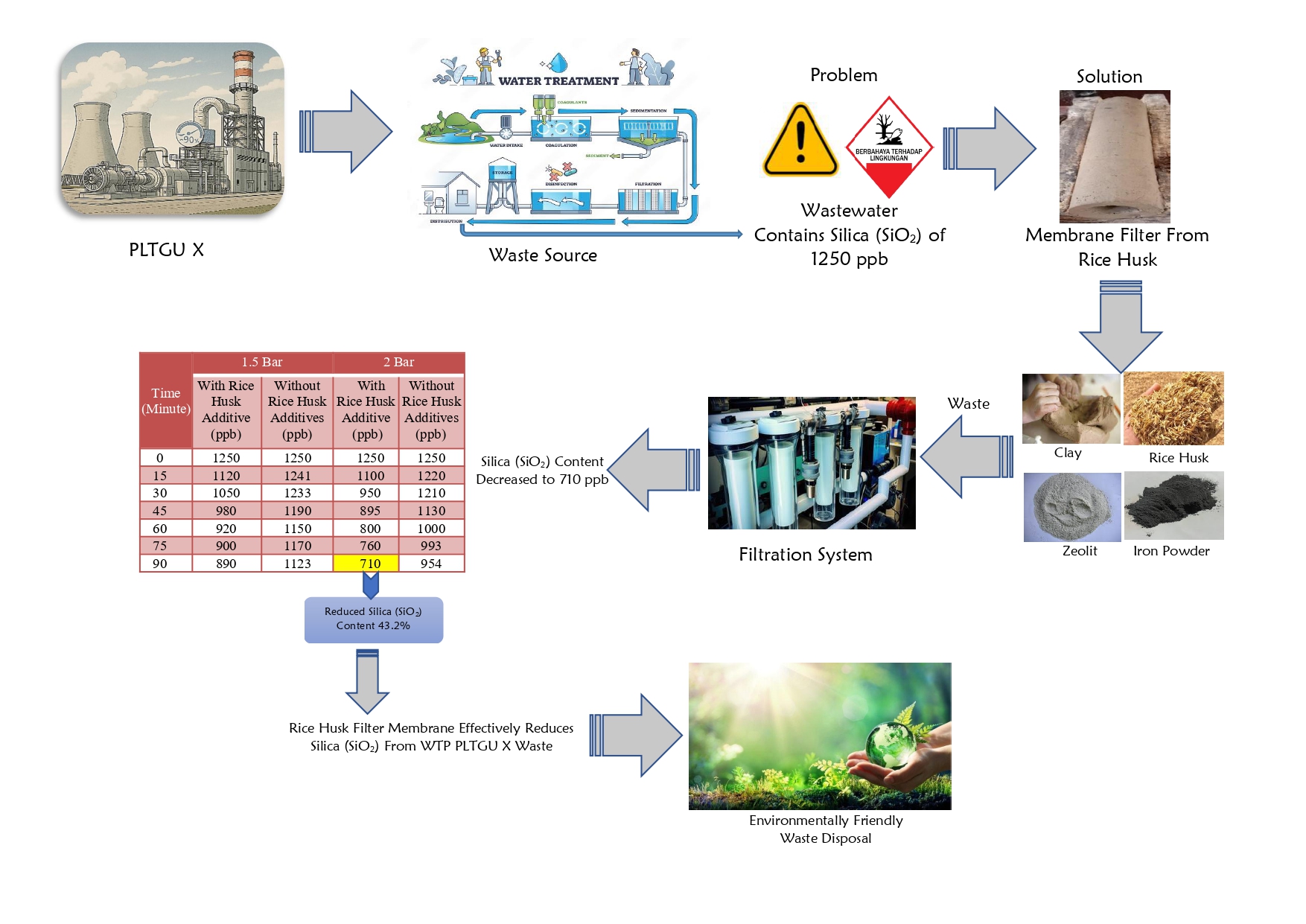Pemodelan dan Simulasi Pencairan Gas Alam dengan Persamaan Keadaan Peng Robinson

Downloads
Gas alam merupakan energi yang ramah lingkungan dibandingkan batubara dan minyak bumi. Pencairan gas alam memudahkan pengangkutan pada jarak jauh. Tujuan pemodelan dan simulasi pencairan gas alam ini yaitu mengetahui pengaruh temperatur dan tekanan pada masukan kompresor. Simulasi dilakukan secara statis dan dinamis. Metode simulasi pencairan gas alam menggunakan perangkat Matlab dengan persamaan keadaan Peng Robinson dan aturan campuran (mixing rules). Pemodelan statisdilakukan pada temperatur masukan gas alam 298 K dan tekanan 20 atm. Hasil simulasi menunjukkan gas alam mengalami pencairan pada siklus kedua. Temperatur gas alam siklus pertama mencapai 182 K sedangkan kedua 112 K. Pemodelan dinamis memvariasikan temperatur masukan kompresor pada komposisi gas alam tetap dan variasi komposisi gas metana pada temperatur masukan kompresor tetap. Hasil menunjukkan semakin tinggi temperatur masukan kompresor, semakin tinggi temperatur keluaran kompresor akhir dan throttling valve. Pada variasi komposisi gas metana, semakin besar komposisi gas metana maka semakin rendah suhu keluaran kompresor.
Downloads
Akinola, T. E., Oko, E., & Wang, M. (2019). Study of CO2 removal in natural gas process using mixture of ionic liquid and MEA through process simulation. Fuel, 236, 135-146, DOI: 10.1016/j.fuel.2018.08.152
Al-Breiki, M., & Bicer, Y. (2020). Technical assessment of liquefied natural gas, ammonia and methanol for overseas energy transport based on energy and exergy analyses. International Journal of Hydrogen Energy, 45(60), 34927-34937, DOI: 10.1016/j.ijhydene.2020.04.181
AlNouss, A., Ibrahim, M., & Al-Sobhi, S. A. (2018). Potential energy savings and greenhouse gases (GHGs) emissions reduction strategy for natural gas liquid (NGL) recovery: Process simulation and economic evaluation. Cleaner Production, 194, 525-539, DOI: 10.1016/j.jclepro.2018.05.107
Fahmi, M., Fauzi, M., & Wibawa, G. (2013). Studi Awal Desain LNG (Liquefied Natural Gas) Plant Dari Coal Bed Methane (CBM) Dengan Kapasitas Feed 40 MMSCFD. Jurnal Teknik ITS, 2(2), B224-B227, DOI: 10.12962/j23373539.v2i2.3556
Fatimura, M., & Fitriyanti, R. (2018). Penanganan Gas Asam ( Sour Gas ) Yang Terkandung Dalam Gas Alam Menjadi Sweetening Gas. Redoks, 3(2), 55, DOI: 10.31851/redoks.v3i2.2390
Ismail, M. (2014). Proses Pemurnian Gas Bumi sebagai Bahan baku Kilang Mini (Studi kasus Ladang Marginal Cikarang-Area Operasi Barat EP Pertamina). M.P.I, 8(1), 25-38, DOI: 10.29122/mipi.v8i1.3645
Khairunisa, A., Prabu, U.A., & Suwardi, F.R. (2015). Evaluasi Persiapan dan Pelaksanaan Proyek Komersialisasi Gas Lapangan X untuk memenuhi Syarat Volume dan Tekanan pada Kontrak Perjanjian Jual Beli Gas (PJBG) di Pertamina EP Asset 1 Field Jambi. Jurnal Ilmu Teknik, 3(2), 1-6, LINK
Kyle, B.G. (1999). Chemical and Process Thermodynamics. :Prentice- Hall.
Copyright (c) 2021 CHEESA: Chemical Engineering Research Articles

This work is licensed under a Creative Commons Attribution-NonCommercial-ShareAlike 4.0 International License.
With the receipt of the article by CHEESA Editorial Board and the decision to be published, the copyright regarding the article will be transferred to CHEESA Journal.
CHEESA has the right to multiply and distribute the article and every author is not allowed to publish the same article that was published in this journal.

This work is licensed under a Creative Commons Attribution-NonCommercial-ShareAlike 4.0 International License.
Under the following terms:
Attribution ” You must give appropriate credit, provide a link to the license, and indicate if changes were made. You may do so in any reasonable manner, but not in any way that suggests the licensor endorses you or your use.
NonCommercial ” You may not use the material for commercial purposes.
ShareAlike ” If you remix, transform, or build upon the material, you must distribute your contributions under the same license as the original.







